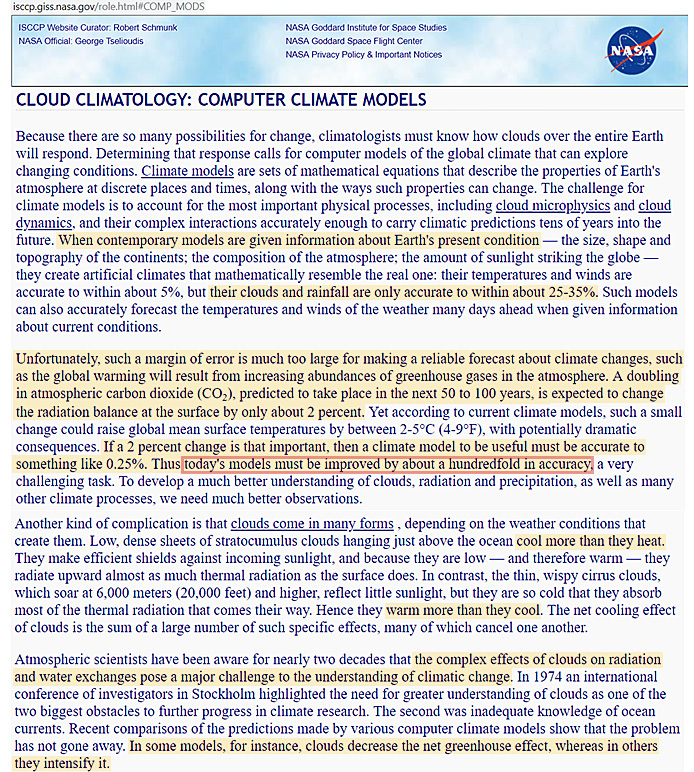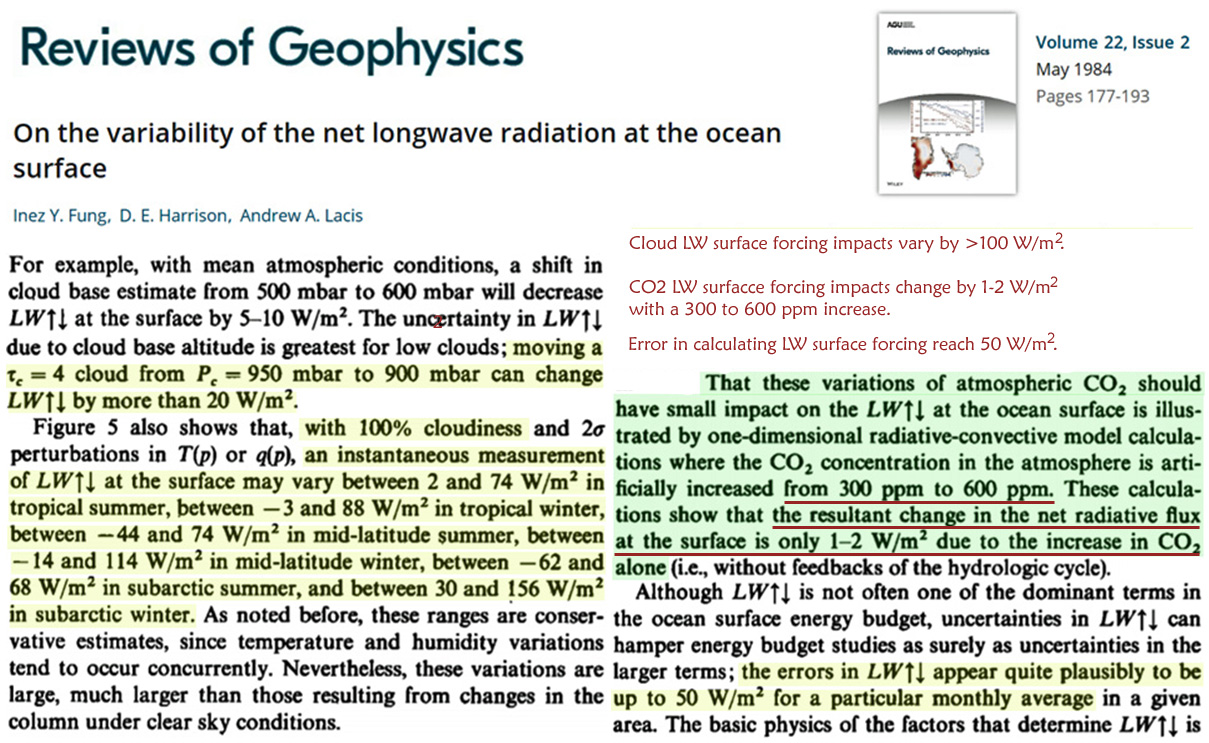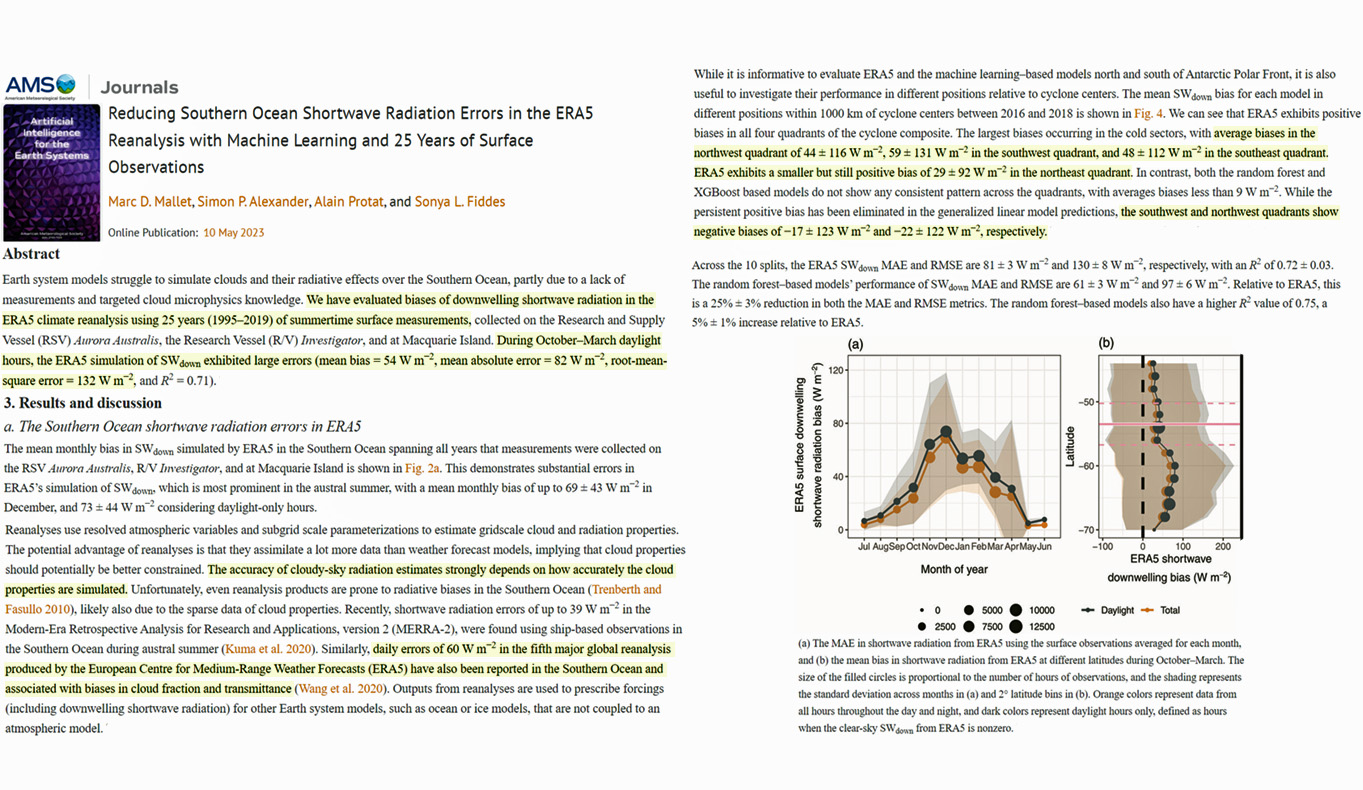Scientists have determined the error in calculating effects of shortwave cloud forcing on climate spans 82-132 W/m² since the mid-1990s. Total clear-sky climate forcing linked to CO2 since 1750 is 1.8 W/m². Therefore, there is no way to accurately determine anthropogenic CO2’s capacity to influence climate.
Even NASA acknowledges that for climate models to be capable of detecting an anthropogenic impact on climate – indeed, for the models to even be useful in long-term projections – their capacity to accurately measure radiation from clouds must be improved “about a hundredfold.”

Image Source: NASA
In a study published in 1984, scientists compared the total radiative surface effects of doubling CO2 from 300 to 600 ppm (“only 1-2 W/m²”) to the “much larger” variability in the radiative effects of clouds in longwave (~70 to 120 W/m²).
At that time these scientists pointed out that the net longwave radiation from clouds varied by 2 to 74 W/m², -3 to 88 W/m², -44 to 74 W/m², -14 to -114 W/m², -62 to 68 W/m², and 30 to 156 W/m² in the tropical summer, tropical winter, mid-latitude summer, mid-latitude winter, subarctic summer, and subarctic winter, respectively.
Interestingly, they also estimated that the errors in calculating net longwave radiation (LW⇅) is plausibly “up to 50 W/m² for a particular monthly average.”

Image Source: Fung et al., 1984
In a new study, scientists have estimated the errors associated with measuring the shortwave radiation induced by variability in cloud cover over the Southern Ocean from 1995-2019.
They find an absolute error of 82 W/m² and a root-mean-square error of 132 W/m² in shortwave radiation assessments due primarily to the difficulties in modeling cloud physics.
Compare these error values to the total net forcing alleged for CO2 since 1750 in an imaginary world with no clouds in the atmosphere (clear-sky only): 1.82 W/m² (Feldman et al., 2015).
The magnitude differential for CO2’s effects vs. the calculation errors in radiation measurements is enough to facilely preclude detection of an anthropogenic CO2 signal.






” …doubling CO2 from 300 to 600 ppm …”
Now at 424 ppm, up 3ppm in the last year. At that rate
600 will be reached about 2081. The average over the
last 60 years is closer to 2. Either way, societies
are destroying great wealth for a non-problem.
Serious issues get little attention.
Oh well – I’ll check out before 600 is reached.